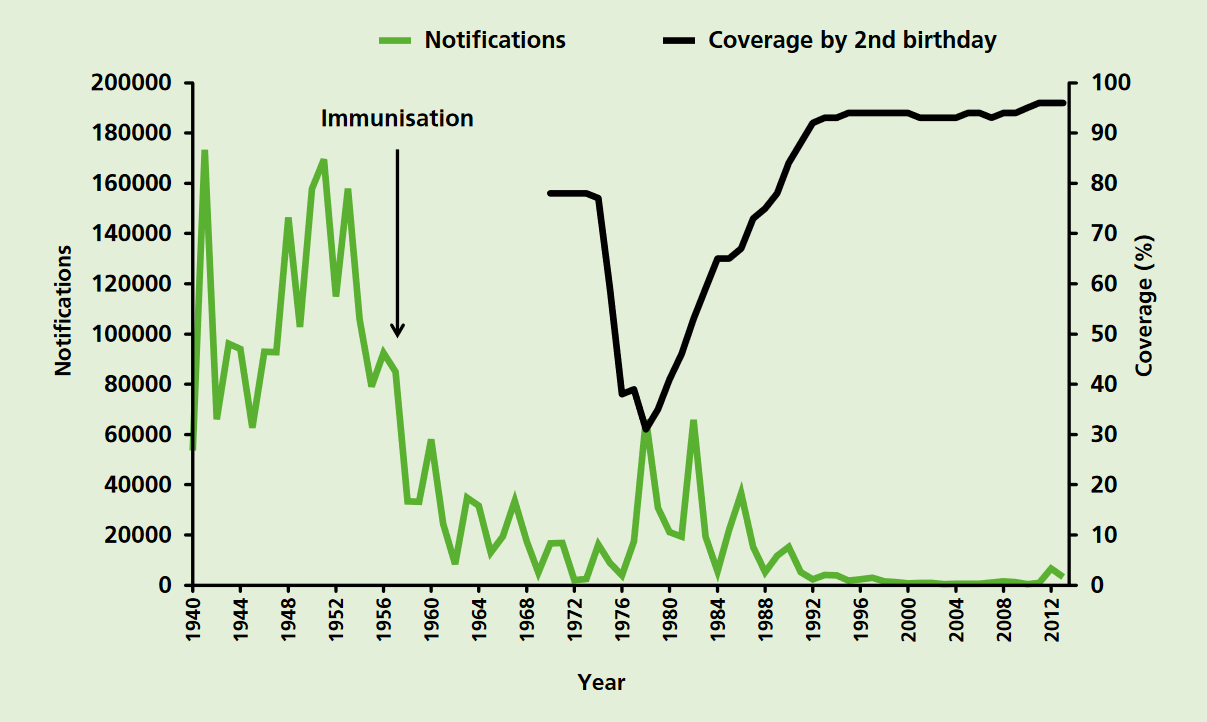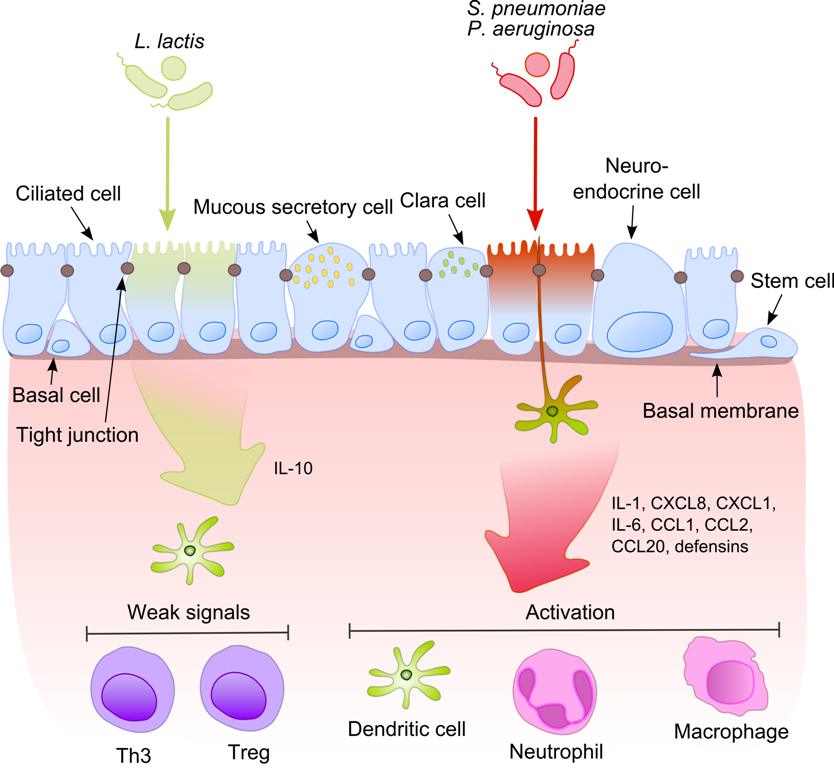|
Pertussis
Whooping cough ( or ), also known as pertussis or the 100-day cough, is a highly contagious, vaccine-preventable bacterial disease. Initial symptoms are usually similar to those of the common cold with a runny nose, fever, and mild cough, but these are followed by two or three months of severe coughing fits. Following a fit of coughing, a high-pitched whoop sound or gasp may occur as the person breathes in. The violent coughing may last for 10 or more weeks, hence the phrase "100-day cough". The cough may be so hard that it causes vomiting, rib fractures, and fatigue. Children less than one year old may have little or no cough and instead have periods when they cannot breathe. The incubation period is usually seven to ten days. Disease may occur in those who have been vaccinated, but symptoms are typically milder. The bacterium '' Bordetella pertussis'' causes pertussis, which is spread easily through the coughs and sneezes of an infected person. People are infectious fro ... [...More Info...] [...Related Items...] OR: [Wikipedia] [Google] [Baidu] |
Pertussis Vaccine
Pertussis vaccine is a vaccine that protects against whooping cough (pertussis). There are two main types: whole-cell vaccines and acellular vaccines. The whole-cell vaccine is about 78% effective while the acellular vaccine is 71–85% effective. The effectiveness of the vaccines appears to decrease by between 2 and 10% per year after vaccination, with a more rapid decrease with the acellular vaccines. The vaccine is only available in combination with tetanus and diphtheria vaccines (DPT vaccine). Pertussis vaccine is estimated to have saved over 500,000 lives in 2002. Vaccinating the mother during pregnancy may protect the baby. The World Health Organization and the US Centers for Disease Control and Prevention recommend all children be vaccinated for pertussis and that it be included in Vaccination schedule, routine vaccinations. Three doses starting at six weeks of age are typically recommended in young children. Additional doses may be given to older children and adults. ... [...More Info...] [...Related Items...] OR: [Wikipedia] [Google] [Baidu] |
Bordetella Pertussis
''Bordetella pertussis'' is a Gram-negative, aerobic, pathogenic, encapsulated coccobacillus bacterium of the genus ''Bordetella'', and the causative agent of pertussis or whooping cough. Its virulence factors include pertussis toxin, adenylate cyclase toxin, filamentous haemagglutinin, pertactin, fimbria, and tracheal cytotoxin. The bacteria are spread by airborne droplets and the disease's incubation period is 7–10 days on average (range 6–20 days). Humans are the only known reservoir for ''B. pertussis''. The complete ''B. pertussis'' genome of 4,086,186 base pairs was published in 2003. Compared to its closest relative ''B. bronchiseptica'', the genome size is greatly reduced. This is mainly due to the adaptation to one host species (human) and the loss of capability of survival outside a host body. Like '' B. bronchiseptica'', ''B. pertussis'' can express a flagellum-like structure, even though it has been historically categorized as a nonmotile bacterium. Ta ... [...More Info...] [...Related Items...] OR: [Wikipedia] [Google] [Baidu] |
Nasopharyngeal Swab
A nasopharyngeal swab is a device used for collecting a sample of Mucus#Respiratory system, nasal secretions from the back of the nose and throat. The sample is then analyzed for the presence of organisms or other clinical markers for disease. This diagnostic method is commonly used in suspected cases of whooping cough, diphtheria, influenza, and various types of diseases caused by the coronavirus family of viruses, including Severe acute respiratory syndrome, SARS, Middle East respiratory syndrome, MERS, and Coronavirus disease 2019, COVID-19. Procedure To collect the sample, the swab is inserted in the nostril and gently moved forward into the Pharynx#Nasopharynx, nasopharynx, a region of the pharynx that covers the roof of the mouth. The swab is then rotated for a specified period of time to collect secretions, then the swab is removed and placed into a sterile viral transport media, which preserves the sample for the subsequent analysis. Material composition of swab Similar ... [...More Info...] [...Related Items...] OR: [Wikipedia] [Google] [Baidu] |
Incubation Period
Incubation period (also known as the latent period or latency period) is the time elapsed between exposure to a pathogenic organism, a chemical, or ionizing radiation, radiation, and when symptoms and signs are first apparent. In a typical infectious disease, the incubation period signifies the period taken by the multiplying organism to reach a threshold necessary to produce symptoms in the host. While ''latent'' or ''latency period'' may be synonymous, a distinction is sometimes made whereby the latent period (epidemiology), latent period is defined as the time from infection to infectiousness. Which period is shorter depends on the disease. A person may carry a disease, such as ''Streptococcus'' in the throat, without exhibiting any symptoms. Depending on the disease, the person may or may not be contagious disease, contagious during the incubation period. During latency, an infection is subclinical. With respect to viral infections, in incubation the virus is replicating. Thi ... [...More Info...] [...Related Items...] OR: [Wikipedia] [Google] [Baidu] |
Vaccination
Vaccination is the administration of a vaccine to help the immune system develop immunity from a disease. Vaccines contain a microorganism or virus in a weakened, live or killed state, or proteins or toxins from the organism. In stimulating the body's Adaptive immune system, adaptive immunity, they help prevent sickness from an infectious disease. When a sufficiently large percentage of a population has been vaccinated, herd immunity results. Herd immunity protects those who may be immunocompromised and cannot get a vaccine because even a weakened version would harm them. The effectiveness of vaccination has been widely studied and verified. Vaccination is the most effective method of preventing infectious diseases; widespread immunity due to vaccination is largely responsible for the Eradication of infectious diseases, worldwide eradication of smallpox and the elimination of diseases such as polio and tetanus from much of the world. According to the World Health Organization ... [...More Info...] [...Related Items...] OR: [Wikipedia] [Google] [Baidu] |
Polymerase Chain Reaction
The polymerase chain reaction (PCR) is a method widely used to make millions to billions of copies of a specific DNA sample rapidly, allowing scientists to amplify a very small sample of DNA (or a part of it) sufficiently to enable detailed study. PCR was invented in 1983 by American biochemist Kary Mullis at Cetus Corporation. Mullis and biochemist Michael Smith (chemist), Michael Smith, who had developed other essential ways of manipulating DNA, were jointly awarded the Nobel Prize in Chemistry in 1993. PCR is fundamental to many of the procedures used in genetic testing and research, including analysis of Ancient DNA, ancient samples of DNA and identification of infectious agents. Using PCR, copies of very small amounts of DNA sequences are exponentially amplified in a series of cycles of temperature changes. PCR is now a common and often indispensable technique used in medical laboratory research for a broad variety of applications including biomedical research and forensic ... [...More Info...] [...Related Items...] OR: [Wikipedia] [Google] [Baidu] |
Vaccine-preventable Diseases
A vaccine-preventable disease is an infectious disease for which an effective preventive vaccine exists. If a person acquires a vaccine-preventable disease and dies from it, the death is considered a vaccine-preventable death. The most common and serious vaccine-preventable diseases tracked by the World Health Organization (WHO) are: diphtheria, ''Haemophilus influenzae'' serotype b infection, hepatitis B, measles, meningitis, mumps, pertussis, poliomyelitis, rubella, tetanus, tuberculosis, and yellow fever. The WHO reports licensed vaccines being available to prevent, or contribute to the prevention and control of, 31 vaccine-preventable infections. Background In 2012, the World Health Organization estimated that vaccination prevents 2.5 million deaths each year. With 100% immunization, and 100% efficacy of the vaccines, one out of seven deaths among young children could be prevented, mostly in developing countries, making this an important global health issue. Four diseases wer ... [...More Info...] [...Related Items...] OR: [Wikipedia] [Google] [Baidu] |
Pathogenic Bacteria
Pathogenic bacteria are bacteria that can cause disease. This article focuses on the bacteria that are pathogenic to humans. Most species of bacteria are harmless and many are Probiotic, beneficial but others can cause infectious diseases. The number of these pathogenic species in humans is estimated to be fewer than a hundred. By contrast, several thousand species are considered part of the gut flora, with a few hundred species present in each individual human's digestive tract. The body is continually exposed to many species of bacteria, including beneficial commensals, which grow on the skin and mucous membranes, and saprophytes, which grow mainly in the soil and in decomposition, decaying matter. The blood and tissue fluids contain nutrients sufficient to sustain the growth of many bacteria. The body has defence mechanisms that enable it to resist microbial invasion of its tissues and give it a natural immune system, immunity or innate immunity, innate resistance against man ... [...More Info...] [...Related Items...] OR: [Wikipedia] [Google] [Baidu] |
Azithromycin
Azithromycin, sold under the brand names Zithromax (in oral form) and Azasite (as an eye drop), is an antibiotic medication used for the treatment of several bacterial infections. This includes otitis media, middle ear infections, strep throat, pneumonia, traveler's diarrhea, Sexually transmitted infection, STI and certain other gastroenteritis, intestinal infections. Along with other medications, it may also be used for malaria. It is Drug administration, administered by mouth, intravenously, into a vein, or into the eye drops, eye. Common side effects include nausea, vomiting, diarrhea and upset stomach. An allergic reaction, such as anaphylaxis, or a type of diarrhea caused by Clostridioides difficile infection, ''Clostridioides difficile'' is possible. Azithromycin causes drug-induced QT prolongation, QT prolongation that may cause life-threatening arrhythmias such as torsades de pointes. While some studies claim that no harm has been found with use during pregnancy, more ... [...More Info...] [...Related Items...] OR: [Wikipedia] [Google] [Baidu] |
Trimethoprim/sulfamethoxazole
Trimethoprim/sulfamethoxazole, sold under the trade names Bactrim, Cotrim (a short form of the British Approved Name, Co-trimoxazole) and Septra, among others, is a fixed-dose combination antibiotic medication used to treat a variety of bacterial infections. It consists of one part trimethoprim to five parts sulfamethoxazole. It is used to treat urinary tract infections, methicillin-resistant Staphylococcus aureus (MRSA) skin infections, travelers' diarrhea, respiratory tract infections, and cholera, among others. It is used both to treat and prevent pneumocystis pneumonia and toxoplasmosis in people with HIV/AIDS and other causes of immunosuppression. It can be given orally (swallowed by mouth) or intravenous infusion (slowly injected into a vein with an IV). Trimethoprim/sulfamethoxazole is on the World Health Organization's List of Essential Medicines. It is available as a generic medication. In 2022, it was the 143rd most commonly prescribed medication in the Unit ... [...More Info...] [...Related Items...] OR: [Wikipedia] [Google] [Baidu] |




